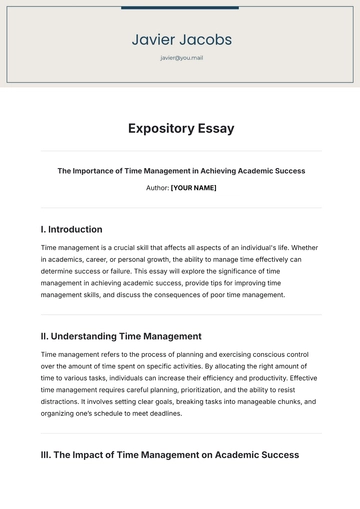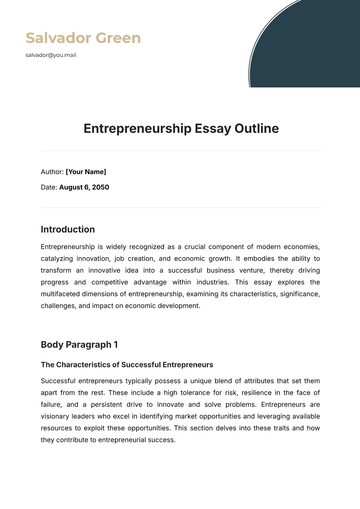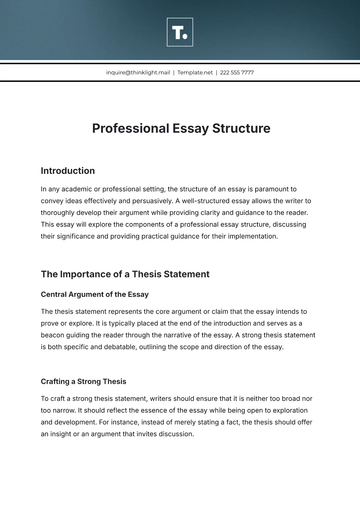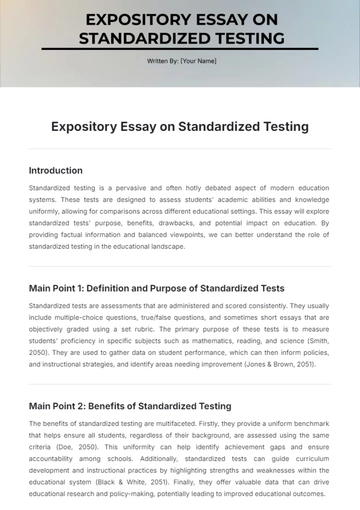Free Gender Inequality in Technology Expository Essay
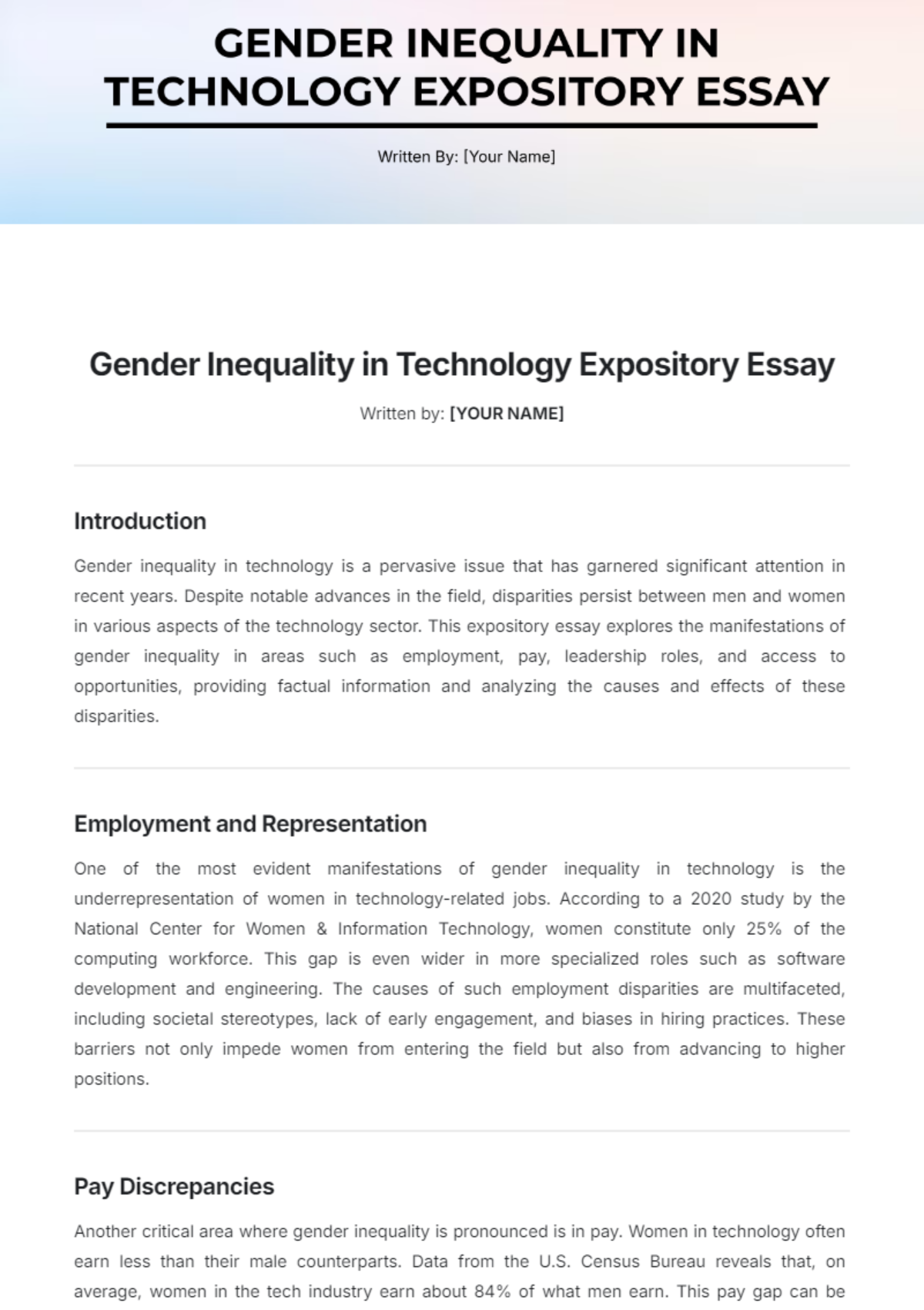
Written by: [YOUR NAME]
Introduction
Gender inequality in technology is a pervasive issue that has garnered significant attention in recent years. Despite notable advances in the field, disparities persist between men and women in various aspects of the technology sector. This expository essay explores the manifestations of gender inequality in areas such as employment, pay, leadership roles, and access to opportunities, providing factual information and analyzing the causes and effects of these disparities.
Employment and Representation
One of the most evident manifestations of gender inequality in technology is the underrepresentation of women in technology-related jobs. According to a 2020 study by the National Center for Women & Information Technology, women constitute only 25% of the computing workforce. This gap is even wider in more specialized roles such as software development and engineering. The causes of such employment disparities are multifaceted, including societal stereotypes, lack of early engagement, and biases in hiring practices. These barriers not only impede women from entering the field but also from advancing to higher positions.
Pay Discrepancies
Another critical area where gender inequality is pronounced is in pay. Women in technology often earn less than their male counterparts. Data from the U.S. Census Bureau reveals that, on average, women in the tech industry earn about 84% of what men earn. This pay gap can be attributed to various factors, including differences in negotiation practices, occupational segregation, and unequal distribution of resources. The pay disparity not only affects women's financial stability but also signals a broader issue of undervaluing women's contributions in the workplace.
Leadership Roles and Career Advancement
Gender inequality in technology also manifests in the scarcity of women in leadership roles. Despite the growing number of women entering the tech industry, few make it to executive positions. A report by McKinsey & Company found that women hold only 21% of executive roles in technology companies. The lack of female representation in leadership is often due to the "glass ceiling" effect, where women face significant barriers to career advancement. These barriers include organizational biases, lack of mentorship opportunities, and work-life balance challenges. The underrepresentation of women in leadership roles not only stifles diversity of thought and innovation but also perpetuates existing gender biases within organizations.
Conclusion
In conclusion, gender inequality in technology is a complex issue that manifests in various forms, including employment disparities, pay discrepancies, and underrepresentation in leadership. Addressing these inequalities requires concerted efforts from all stakeholders, including policymakers, industry leaders, and educational institutions. By fostering an inclusive environment and implementing equitable practices, the technology sector can move towards a future where talent and innovation are not hindered by gender biases.
- 100% Customizable, free editor
- Access 1 Million+ Templates, photo’s & graphics
- Download or share as a template
- Click and replace photos, graphics, text, backgrounds
- Resize, crop, AI write & more
- Access advanced editor
The Gender Inequality in Technology Expository Essay Template from Template.net is fully customizable and editable, allowing you to tailor the content to your needs. Editable in our AI Editor too, this template offers a seamless experience for creating a compelling essay on gender disparities in tech. Perfect for educators, students, and professionals alike.



















